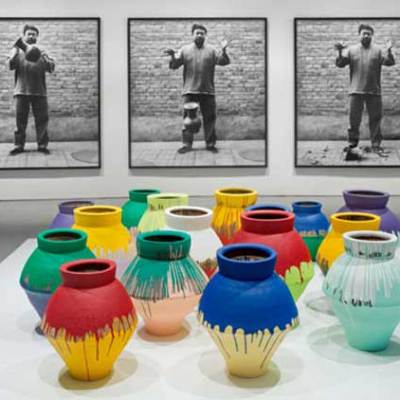‘Please do not touch the objects. Please do not climb, poke, lick, draw on, or drape yourself around the objects. Please?’
In museums and galleries around the globe, attendants and curators face a daily battle to protect their collections and displays from the wandering hands – and other body parts – of visitors. While trying to keep galleries accessible, friendly and interesting, we also have an imperative to protect and preserve. We encourage school groups, families, tourists and coach parties into our carefully-curated halls, and try to keep our screams internalised when we spot a six-year-old scaling the heights of a plinth, or a class of 16-year-olds shoving one another next to a glass case.
Case in point: a nine-year-old girl climbs over a £6 million Donald Judd sculpture in the Tate Modern – her parents claim that she’s ‘anti-establishment’. At the other end of the damage spectrum, a Floridian artist deliberately smashes an Ai Weiwei vase in the Pérez Art Museum Miami – as a protest against the lack of local art on display. One wouldn’t wish to be accused of hysterical pearl-clutching, but it’s difficult not to wonder: are there manners in museums any more?
There are horror stories shared discreetly between museum professionals, of bad behaviour in public galleries. Surrounded by rare, valuable and historically important objects, a minority of visitors either don’t realise or don’t care that grabbing/running/littering/yelling compromises the heritage, narrative and safety of those objects, to say nothing of spoiling other visitors’ cultural experience. Polite notices exhorting people to follow the rules are often ignored, like a mild-mannered but ineffectual schoolteacher.
Where do we draw a line? Many of us will recall our childhood museum visits, being told to ‘ssh!’ and ‘be still!’ by parents or teachers. For many, museums and galleries take on an intimidating aura as a result. This has implications for accessibility, as people from less privileged backgrounds (for whom museum visiting is statistically uncommon) are discouraged in part by the air of forbidding seriousness.
Perhaps the museum world needs to take itself less seriously. Are we prejudiced by the financial value of art objects, or the canonicity of their creators? Pickling our heritage in aspic, keeping it under glass and behind ropes, is not an intellectually or aesthetically appealing prospect. But the price we pay when the rules are relaxed is sometimes too high.



